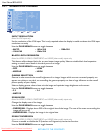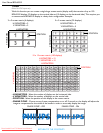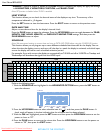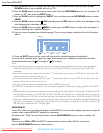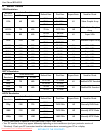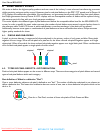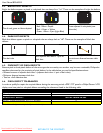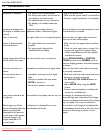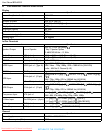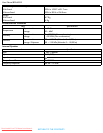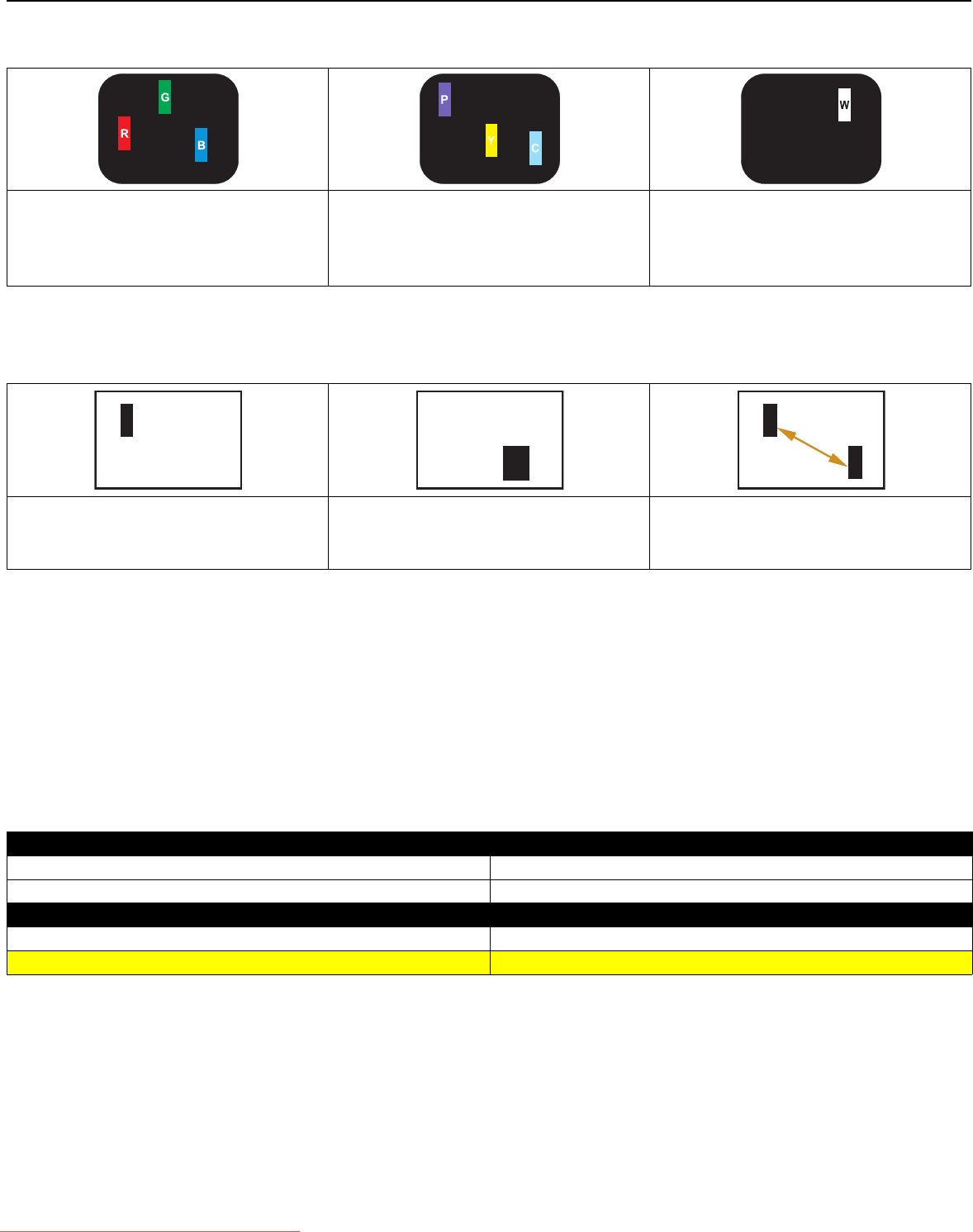
User Manual BDL6531E
RETURN TO THE CONTENTS
6.3. BRIGHT DOT DEFECTS
Bright dot defects appear as pixels or sub-pixels that are always lit or "on". These are the examples of bright dot defects:
6.4. DARK DOT DEFECTS
Black dot defects appear as pixels or sub-pixels that are always dark or "off". These are the examples of black dot
defects:
6.5. PROXIMITY OF PIXEL DEFECTS
Because pixel and sub-pixels defects of the same type that are nearby one another may be more noticeable, Philips also
specifies tolerances for the proximity of pixel defects. In the table below you can find specifications about:
• Allowed amount of adjacent dark dots = (adjacent dark dots =1 pair of dark dots)
• Minimum distance between dark dots
• Total no. of all defective dots
6.6. PIXEL DEFECT TOLERANCES
In order to qualify for repair due to pixel defects during the warranty period, a PDP / TFT panel in a Philips Plasma / LCD
display must have pixel or sub-pixel defects exceeding the tolerances listed in the following table.
One lit red, green or blue sub-pixel
Two adjacent lit sub-pixels:
- Red + Blue = Purple
- Red + Green = Yellow
- Green + Blue = Cyan (Light Blue)
Three adjacent lit sub-pixels (one
white dot)
One dark dot
Two adjacent dark dots = 1 pair of
dark dots
Two dark dots, specifications define
the minimum distance between dark
dots
BRIGHT DOT EFFECT ACCEPTABLE LEVEL
MODEL BDL6531E
1 lit sub pixel 1
BLACK DOT EFFECT ACCEPTABLE LEVEL
1 dark sub pixel 10
TOTAL DOT DEFECTS OF ALL TYPES 10
Note: * 1 or 2 adjacent sub pixel defects = 1 dot defect
Downloaded From TV-Manual.com Manuals




